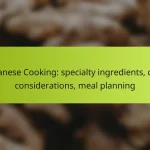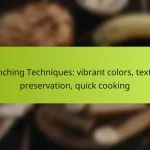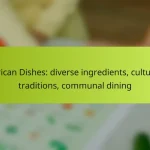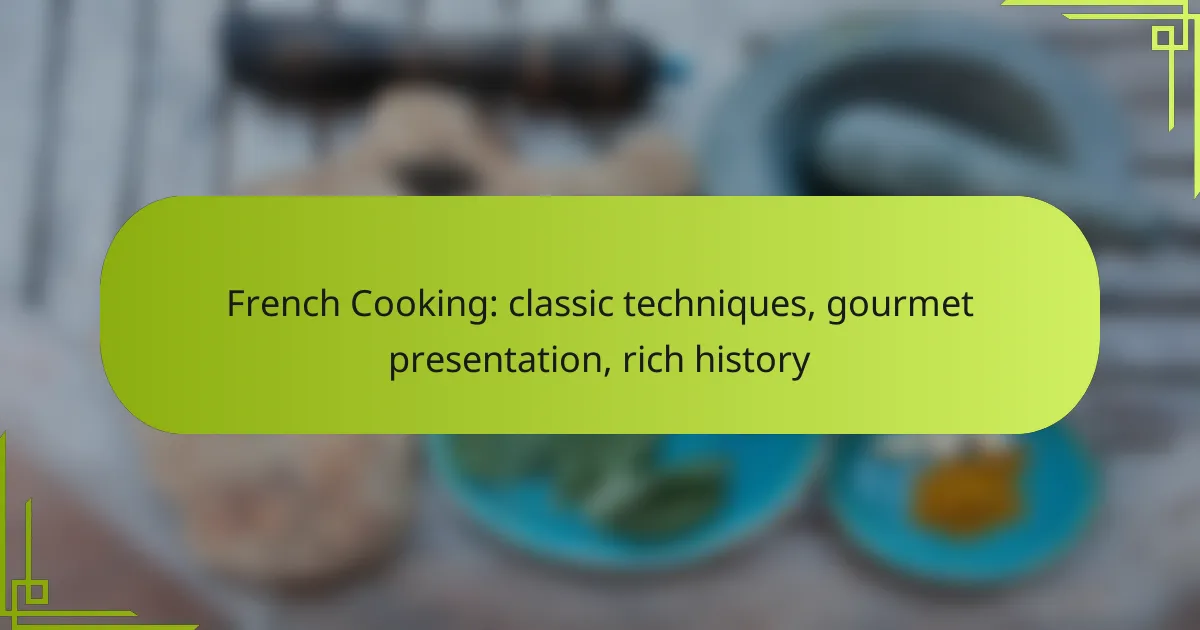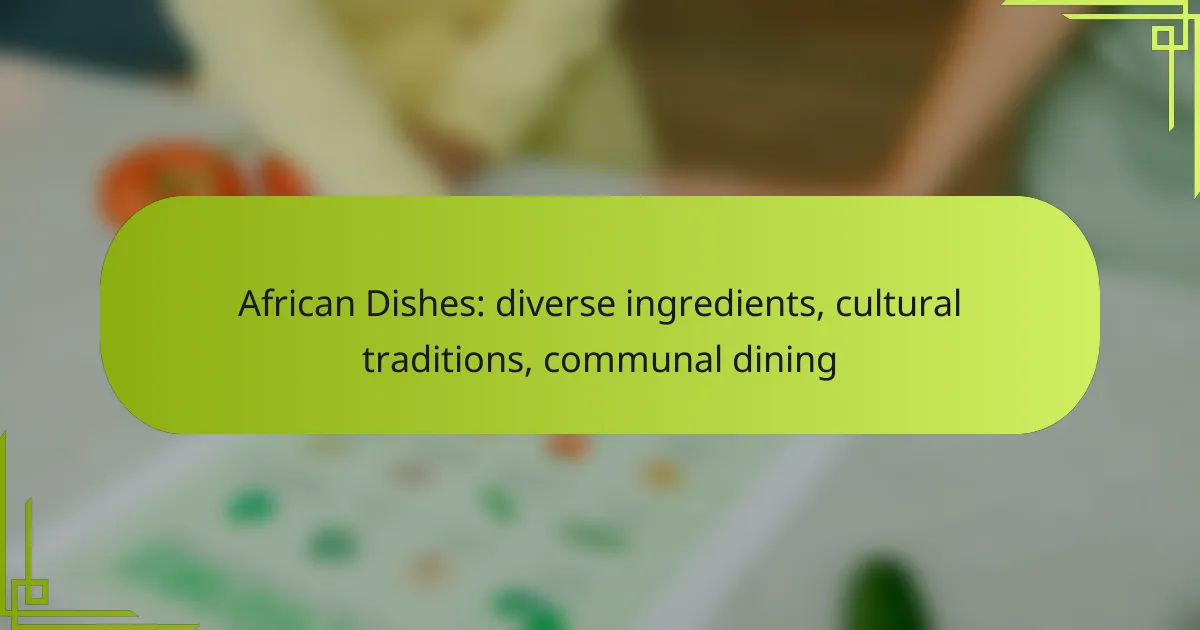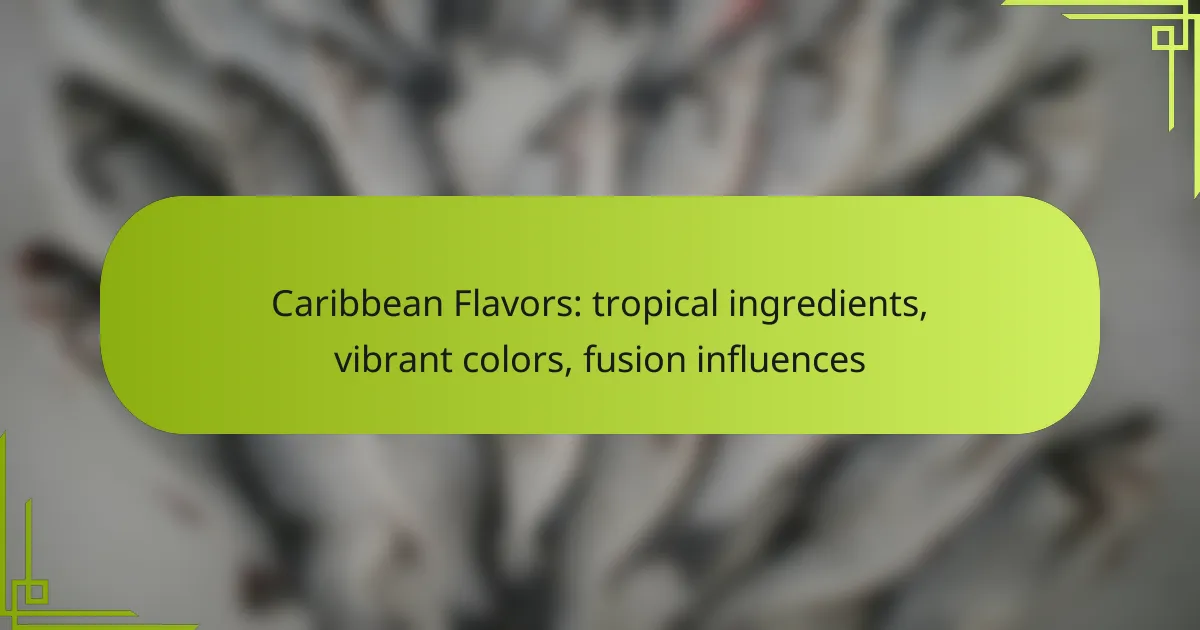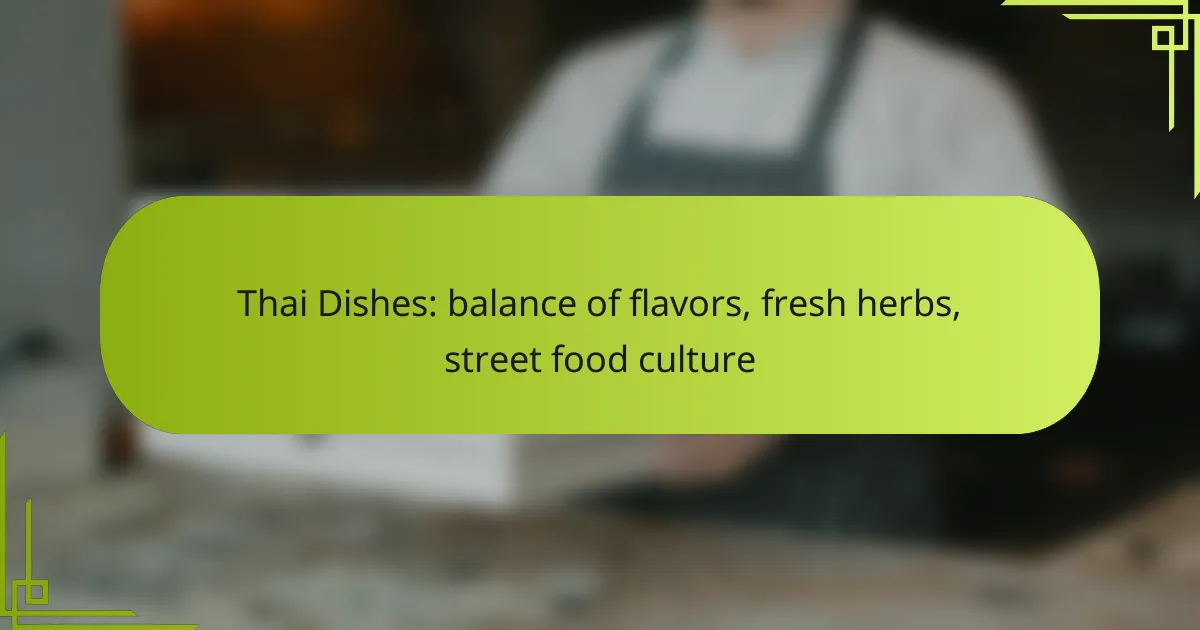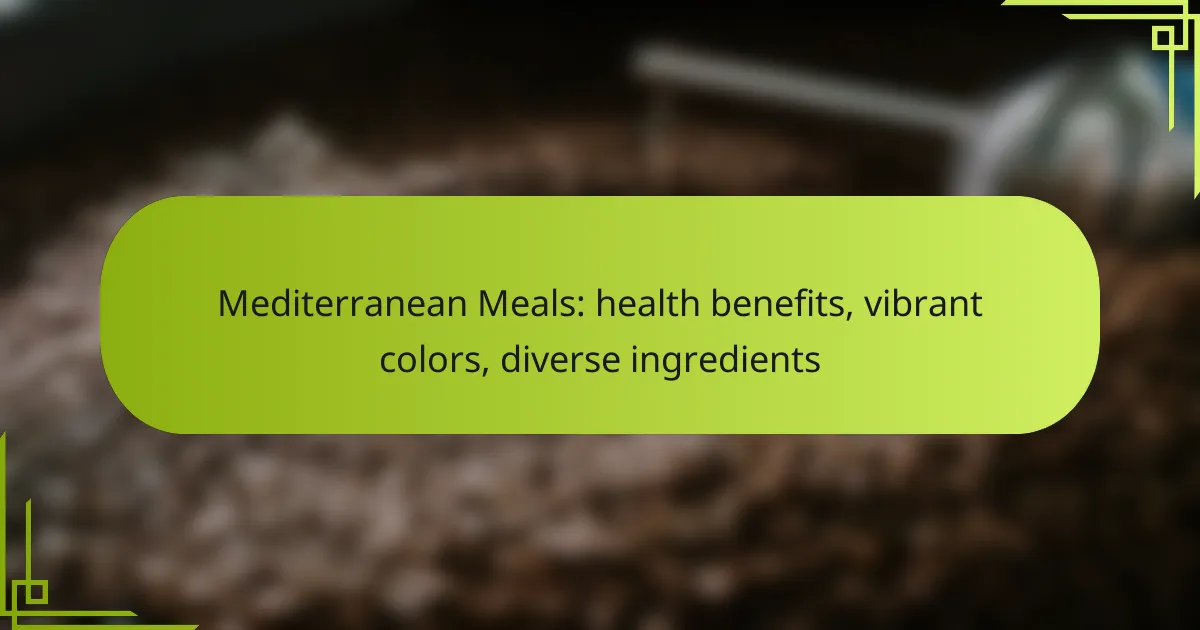French cooking is a rich tapestry of classic techniques and gourmet presentation, rooted in a history that has significantly shaped global culinary practices. By mastering foundational skills such as knife techniques and sauces, chefs can elevate their dishes, while the art of plating transforms meals into stunning visual experiences. This culinary tradition not only showcases regional diversity but also reflects centuries of cultural exchange and refinement.

How can I master classic French cooking techniques?
Mastering classic French cooking techniques involves understanding foundational skills and methods that elevate your culinary creations. Focus on knife skills, sauces, cooking methods, and pastry techniques to build a strong base in French cuisine.
Knife skills for precision
Knife skills are essential in French cooking, as they ensure uniformity and safety in food preparation. Mastering techniques like julienne, chiffonade, and brunoise allows for precise cuts that enhance presentation and cooking times.
Invest in a good quality chef’s knife and practice regularly to improve your speed and accuracy. Remember to keep your knives sharp, as dull blades can lead to accidents and uneven cuts.
Understanding sauces: mother sauces
Mother sauces form the backbone of French cuisine and include béchamel, velouté, espagnole, hollandaise, and tomato sauce. Each sauce serves as a base for various derivatives and flavors, making them crucial for mastering French cooking.
Start by learning the techniques for each mother sauce, as they often require specific ingredients and methods. For example, béchamel is a simple white sauce made from milk, butter, and flour, while hollandaise requires careful emulsification of egg yolks and butter.
Cooking methods: sautéing and braising
Sautéing and braising are two fundamental cooking methods in French cuisine that produce distinct flavors and textures. Sautéing involves cooking food quickly in a small amount of fat over high heat, while braising combines both dry and moist heat to tenderize tougher cuts of meat.
When sautéing, ensure your pan is hot before adding ingredients to achieve a good sear. For braising, sear the meat first, then add liquid and cook slowly to develop rich flavors. Both methods require attention to timing and temperature for optimal results.
Pastry techniques: pâte brisée and pâte feuilletée
Pâte brisée and pâte feuilletée are essential pastry techniques in French cooking. Pâte brisée is a shortcrust pastry used for tarts and quiches, while pâte feuilletée is a flaky puff pastry ideal for pastries and desserts.
To make pâte brisée, combine flour, butter, and water, then chill before rolling out. For pâte feuilletée, the process involves layering dough and butter through a series of folds to create its signature flakiness. Practice is key to achieving the right texture and consistency in both pastries.

What are the key elements of gourmet presentation in French cuisine?
Gourmet presentation in French cuisine emphasizes aesthetics and artistry, transforming dishes into visual masterpieces. Key elements include meticulous plating, thoughtful color contrasts, and the use of garnishes that enhance both appearance and flavor.
Plating techniques for visual appeal
Effective plating techniques are essential for creating visually stunning dishes. Chefs often use the rule of thirds to balance elements on the plate, ensuring that no single area overwhelms the others. Techniques such as stacking, layering, and using negative space can elevate the presentation.
For example, a classic dish like coq au vin can be plated with the chicken piece slightly off-center, accompanied by a small mound of mashed potatoes and a drizzle of sauce around the edge. This approach draws the eye and invites diners to explore the plate.
Color contrast and texture variety
Color contrast plays a crucial role in gourmet presentation, as vibrant colors can stimulate appetite and enhance visual interest. Combining ingredients with different hues, such as bright green herbs against rich brown meats, creates an appealing contrast that captures attention.
Texture variety is equally important; pairing creamy elements with crunchy components adds depth to the dish. For instance, a velvety sauce can be complemented by crispy fried shallots, providing a delightful contrast that enhances the overall dining experience.
Garnishing with herbs and sauces
Garnishing is a vital step in French cuisine, where fresh herbs and sauces not only beautify the plate but also add flavor. Common garnishes include finely chopped parsley, chives, or microgreens, which can brighten a dish and provide a fresh finish.
Sauces should be applied thoughtfully; a simple drizzle or a carefully placed dollop can enhance the dish’s visual appeal. For example, a rich béarnaise sauce can be artistically swirled on the plate, creating a sophisticated look that complements the main ingredients.
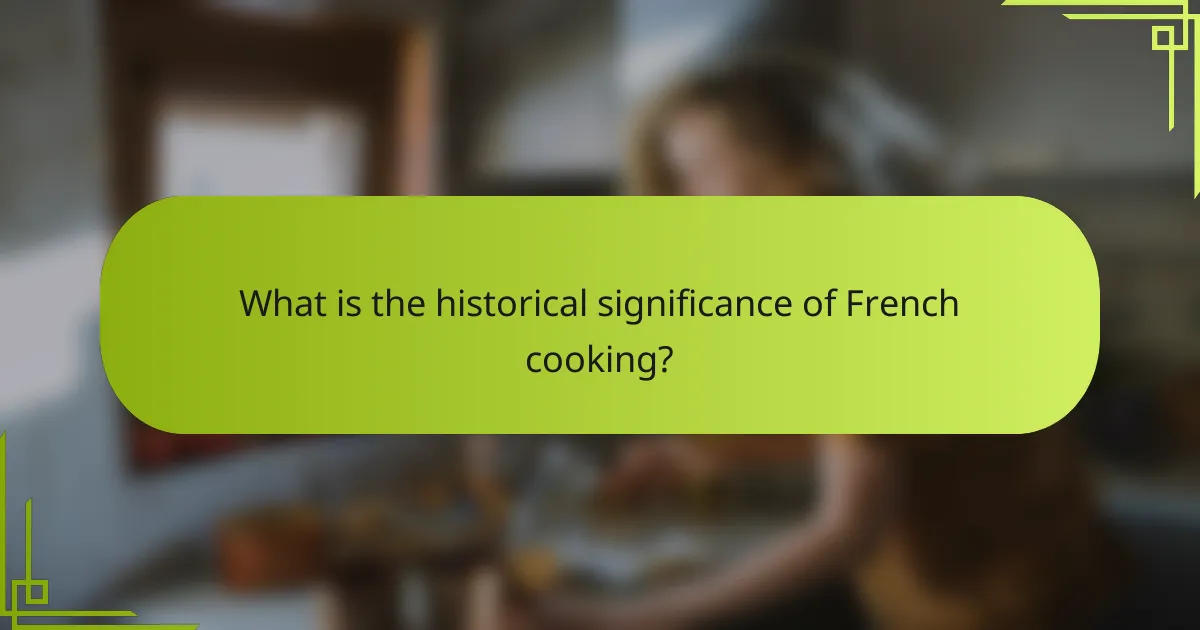
What is the historical significance of French cooking?
French cooking holds immense historical significance as it has shaped culinary practices worldwide and established foundational techniques still in use today. Its evolution reflects cultural exchanges, regional diversity, and the refinement of cooking methods that have influenced global gastronomy.
Influence of regional cuisines
Regional cuisines in France, such as Provençal, Breton, and Alsatian, contribute unique flavors and ingredients that define the country’s culinary landscape. Each region showcases local produce, traditional recipes, and cooking methods, creating a rich tapestry of flavors that influence both French and international cooking.
For example, the use of herbs and olive oil in Provençal dishes contrasts with the butter and cream prevalent in northern French cooking. This regional diversity not only enriches French cuisine but also inspires chefs around the world to incorporate local ingredients into their dishes.
Evolution of culinary schools in France
Culinary schools in France, such as Le Cordon Bleu and the École Ritz Escoffier, have played a pivotal role in formalizing and disseminating French cooking techniques. These institutions offer rigorous training in classical methods, emphasizing precision and artistry in food preparation and presentation.
The evolution of these schools reflects the growing recognition of cooking as a professional art form, attracting aspiring chefs from around the globe. Graduates often carry the principles of French cuisine into their own culinary practices, further spreading its influence.
Impact of French cuisine on global gastronomy
French cuisine has profoundly impacted global gastronomy by introducing techniques such as sautéing, poaching, and emulsifying, which are now staples in kitchens worldwide. The emphasis on presentation and flavor balance has set a standard for fine dining that many cultures strive to emulate.
Moreover, French culinary terms and practices have permeated international cooking, with many chefs adopting French techniques to enhance their culinary repertoire. This influence is evident in the popularity of French-inspired restaurants and the integration of French dishes into diverse culinary traditions.

How do I choose the right tools for French cooking?
Choosing the right tools for French cooking is essential for mastering its classic techniques and achieving gourmet presentation. Focus on quality over quantity, selecting versatile items that can handle various tasks in the kitchen.
Essential cookware for French techniques
Key cookware for French cooking includes heavy-duty pots and pans, such as cast iron skillets and copper saucepans. These materials provide excellent heat retention and distribution, crucial for techniques like sautéing and braising.
Other important tools are non-stick frying pans for delicate dishes like omelets and a sturdy Dutch oven for slow-cooked stews. Investing in a good quality mandoline slicer can also enhance your presentation by allowing for precise cuts.
Recommended brands for kitchen tools
When selecting kitchen tools for French cooking, consider reputable brands known for their craftsmanship. Le Creuset and Staub are excellent choices for enameled cast iron cookware, while All-Clad is renowned for stainless steel options.
For knives, Wüsthof and Victorinox offer reliable, high-quality options that can handle a variety of cutting tasks. Investing in these brands ensures durability and performance, making your cooking experience more enjoyable and efficient.

What are the most popular French dishes to try?
Some of the most popular French dishes include Coq au vin, Ratatouille, and Tarte Tatin. Each dish showcases unique flavors and techniques, making them essential for anyone wanting to experience authentic French cuisine.
Coq au vin as a classic dish
Coq au vin is a traditional French dish that features chicken braised slowly in red wine, typically Burgundy, along with mushrooms, lardons, and aromatic vegetables. This dish highlights the importance of using quality ingredients and allows the flavors to meld beautifully over time.
To prepare Coq au vin, start by marinating the chicken in wine for several hours or overnight. Then, brown the chicken and sauté the vegetables before combining everything in a pot to simmer. Aim for a cooking time of around two to three hours to achieve tender meat and a rich sauce.
Ratatouille for seasonal ingredients
Ratatouille is a vegetable dish that celebrates the bounty of seasonal produce, particularly eggplant, zucchini, bell peppers, and tomatoes. Originating from Provence, this dish is often served as a side or a main course and can be enjoyed hot or cold.
When making Ratatouille, consider using fresh, local vegetables to enhance the flavors. Sauté the vegetables separately to maintain their individual textures, then combine them with herbs like thyme and basil. This dish is not only versatile but also a great way to incorporate more vegetables into your meals.
Tarte Tatin as a dessert option
Tarte Tatin is an upside-down caramelized apple tart that offers a delightful blend of sweet and tart flavors. This dessert is a classic example of French pastry techniques, showcasing the importance of balance and presentation in French cooking.
To create Tarte Tatin, start by caramelizing sugar and butter in a skillet, then layer the apples on top before covering with pastry. Bake until golden brown, then invert the tart onto a plate for serving. This dessert is best enjoyed warm, often accompanied by a scoop of vanilla ice cream or a dollop of crème fraîche.

How can I incorporate French cooking into my everyday meals?
Incorporating French cooking into your everyday meals can elevate your culinary experience with rich flavors and elegant techniques. Start by mastering a few classic methods and simple recipes that can be adapted to your routine cooking.
Simple recipes for home cooks
Begin with classic French dishes that are straightforward yet impressive. For instance, a simple ratatouille combines seasonal vegetables like eggplant, zucchini, and bell peppers, simmered with herbs for a flavorful side or main dish. Another easy option is a quiche, which can be filled with various ingredients such as cheese, spinach, or ham, making it versatile for any meal.
Consider mastering the technique of making a basic sauce, like a béchamel or a vinaigrette. A béchamel, made from butter, flour, and milk, serves as a foundation for many dishes, while a vinaigrette can enhance salads and roasted vegetables. These sauces can be prepared in under 15 minutes and stored for later use.
To further simplify your French cooking journey, focus on using quality ingredients. Fresh herbs, good-quality butter, and seasonal produce can significantly enhance the flavors of your dishes. Aim to keep a few staple French ingredients on hand, such as Dijon mustard, shallots, and fresh thyme, to easily elevate your everyday meals.


